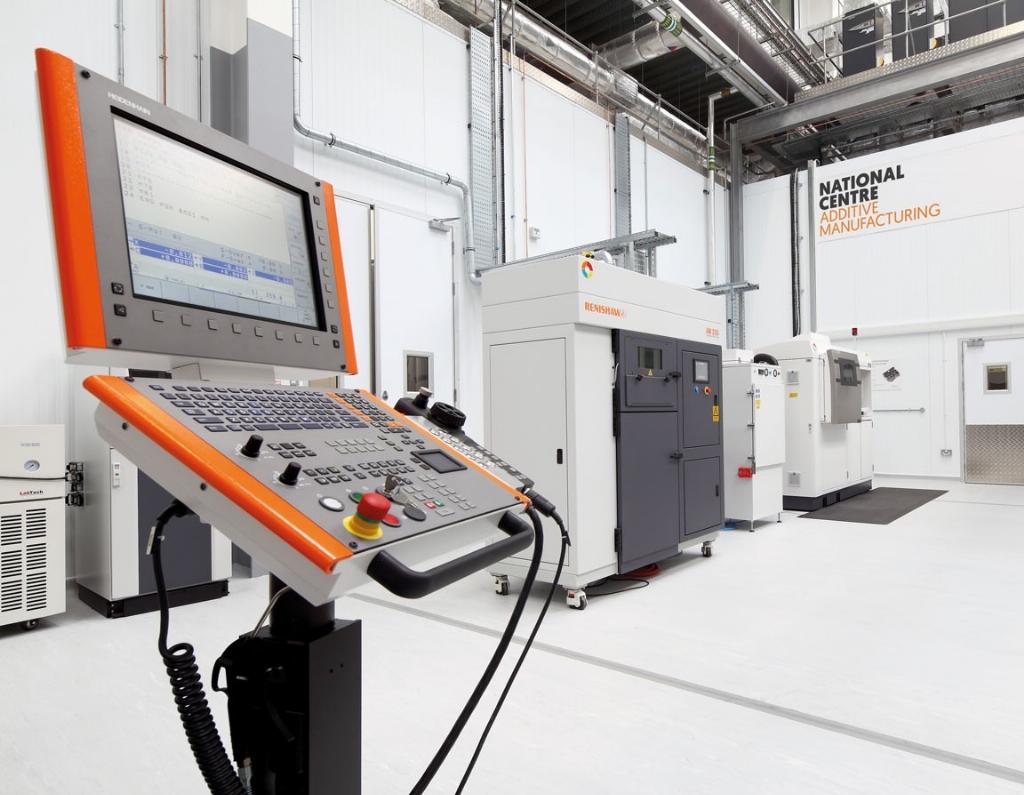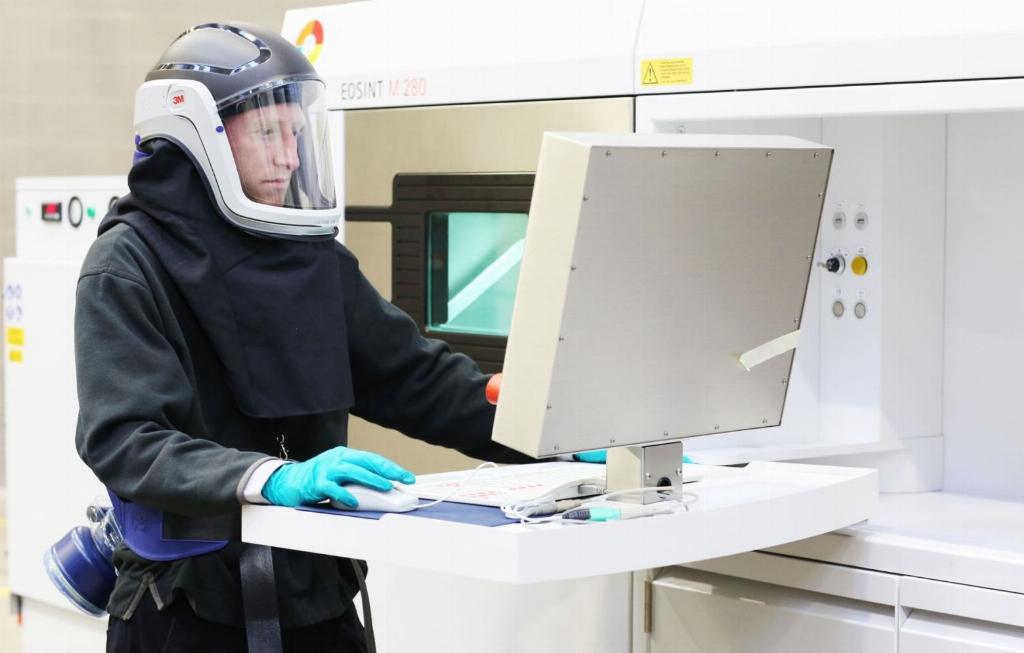Creating a drama for additive advances

In this Q&A, Midland Aerospace Alliance (MAA) chief executive Dr Andrew Mair and MAA technology managers Pamela Farries, Peter Knight and Stan Payne discuss with Ed Hill the DRAMA programme intended to promote additive manufacturing in the UK’s aerospace supply chain.
In this Q&A, Midlands Aerospace Alliance (MAA) chief executive Dr Andrew Mair and MAA technology managers Pamela Farries, Peter Knight and Stan Payne discuss with Ed Hill the DRAMA programme intended to promote additive manufacturing in the UK’s aerospace supply chain.
Additive Manufacturing (AM) has the potential to revolutionise the way aerospace components are manufactured and greatly impact supply chains. The UK government and industry-backed Digital Reconfigurable Additive Manufacturing facilities for Aerospace (DRAMA) collaborative research project launched in 2017 has been created to research and share expertise in the field and develop new trial facilities so faster adoption and implementation of this transformative technology can be implemented by UK companies. The consortium is led by the Manufacturing Technology Centre (MTC) – home to the National Centre for Additive Manufacturing – and includes the Midlands Aerospace Alliance, ATS, Autodesk, Granta Material Intelligence, NPL, Renishaw and the University of Birmingham.
Q) Tell us more about the DRAMA initiative and your collaboration with the MTC? What was the motivation for setting up the programme?
DRAMA was set up to stimulate the adoption of metal additive manufacturing in the aerospace industry. A range of support services has been developed, including: an online reference library called Knowledge Hub, training courses, advisory packages and a state-of-the-art metal additive facility where companies can learn about additive and develop their products. With so many member companies likely to be impacted by the introduction of additive manufacturing, the Midlands Aerospace Alliance was keen to be part of the project led by the Manufacturing Technology Centre (MTC) and take responsibility for supply chain engagement across the UK.

Working closely as a consortium and with the added help of an Industrial Steering Group, ten aerospace companies (including Rolls-Royce, BAE Systems and Airbus) DRAMA has raised awareness of metal additive with more than 250 companies through MAA activities. We have also helped the first cohort of 48 companies to progress their adoption of additive manufacturing. With these 48 companies, the MTC has piloted 14 training courses, five advisory packages and put 15 projects through the facility.
Q) Can you explain more about the role of the other stakeholders in the programme?
Each of the other partners has developed IP related to additive manufacturing in their own field, much related to developing the links in the digital thread that has to run parallel to the chain of manufacturing processes that make up additive. Renishaw has provided additional manufacturing expertise and capability, complementary to the new facilities set up at the MTC’s National Centre for Additive Manufacturing.
Q) How big are the inroads that additive manufacturing has already made in aerospace?
Many traditional subtractive machining companies are actively using carbon reinforced polymer AM to make jigs and fixtures, and this tends to be the case across all tiers of the supply chain. However, regarding metal AM, it is generally the case that this is mostly confined to the Primes and Tier 1s, and maybe contrary to the popular view, not just for passive or low criticality components. Companies such as GE Aviation have shown that even safety critical parts of aeroplane engines can be built using AM, taking advantage of the new possibilities it offers. GE now uses AM to manufacture fuel nozzle tips for the LEAP engine, thereby reducing the part count from twenty pieces previously welded together, to one. The AM part count for the new GE Catalyst advanced turboprop engine will be 35% of the total parts, and will include: sumps, bearing housings, frames, exhaust case, combustor liner, heat exchangers and stationary flowpath components.
Q) What are the main barriers for additive processes being adopted more widely in the industry? Is it certification requirements, process reliability, cost?

In the highly regulated aerospace sector, AM is being adopted gradually. To date, the process has been used almost exclusively for non-critical flying parts (e.g. interior cabin components) and only a few aircraft structure AM components have been certified for use. This safety-first approach is fundamentally a certification barrier for AM. Many of the other issues inherent in the AM eco-system, such as health and safety and powder traceability fall relatively easily within existing aerospace logistic and standards systems and should not create too many problems for wide-scale adoption. Cost may be an issue but not in an obvious way. We have already seen that AM parts can be manufactured much less expensively than their equivalent traditionally manufactured components but the cost of retrofit re-certification has been prohibitive. This is likely a barrier that only the most expensive components and sub-systems could overcome for retrofit purposes. Therefore, it’s most likely that AM will see much wider adoption only in a new generation of aircraft.
Q) Do you think companies in the aerospace supply chain have the required mindset to adopt this disruptive technology?
The DRAMA team was pleasantly surprised when we started engaging with aerospace suppliers just how many were already experimenting with AM. It’s such an exciting technology that engineers and manufacturers are naturally drawn to it. What this taught us is that there are several routes to entry into additive, such as making tooling, or supplying other markets, that can help companies build familiarity and build up knowledge and knowhow. It also showed us there really is an appetite. And it’s about a lot more than the additive manufacturing process per se. There are niches for companies in, for example, post-processing where companies can use existing capabilities such as surface finishing or heat treatment or testing for instance.
Q) What are your thoughts on like-for-like additive part replacement versus additive parts that can be designed from the ground up to provide optimum performance characteristics?

There is one essential tenet of AM to make success possible and that is to throw away the old rule book! Parts need to be designed for AM from first principles, considering not just the part, but also its function, what it’s joined to, what surface properties it needs, where it needs strength, how it is used by an operator or assembly worker, how much the basic material costs, and what additional processes will be needed to finish it. In general, the more complex the part, the better the business case. The DRAMA programme’s interaction with the supply chain has confirmed that in most cases, a like-for-like AM replacement of a part currently designed for conventional manufacture is unlikely to be viable.
Q) How do you think AM processes can help with the revolution of greener/electrification requirements for aerospace that will be demanded by the industry in the coming years?
Beyond the basic potential for taking weight out of aircraft to improve fuel efficiency, the electrification of aircraft may well be aided by wider AM adoption due to the technology allowing more hyper-complex structures which are likely to be multi-functional such as heat exchangers, electronics and fluid passages being embedded within aircraft structures thereby making an aircraft considerably lighter and better suited to be powered by the less energy-dense technologies, such as battery power.
Q) What role will both subtractive, additive (or both combined) processes have in the future?
Identifying cost-effective use cases for additive manufacturing in aerospace is a complex process where decisions move back and forth and change as tools, equipment, materials and techniques develop. Costs of approvals and NPI combined with the inability to exploit AM design freedoms, mean that legacy part replacement will not be common and subtractive and conventional net shape methods will continue to hold sway.

Investigation of applications in DRAMA has found some surprising and niche products that will benefit from AM. Use of AM in new mainstream platforms will grow as confidence does. Moreover, it has become increasingly obvious over the three-year course of DRAMA that there is still a fair amount of post-processing work required as well as the build itself, and subtractive processes have roles to play there too. Over the next decade we see AM being incorporated into the tool kit of aerospace manufacturing rather than displacing large volumes of existing work.
Q) What has been the success/conclusion of the DRAMA project so far?
The key has been engaging companies from the start of the programme rather than relying on more traditional ‘dissemination’ activity at the end. The normal funding rules make it difficult to bring in companies that aren’t original project partners, and that makes things very difficult for many SMEs. In DRAMA we’ve found a variety of engagement mechanisms, whether events and briefings, training, or piloting and improving the in-depth support and access to facilities the MTC will be offering in future.
We’ve also built up a community of diverse stakeholders from Primes and Tier 1s to existing suppliers with various capabilities, to new entrants, to technology providers, which it will be important to keep together if possible. But it’s a long haul and there is a lot more work to do in the years to come as the technology and its applications in different aerospace settings continue to mature.












